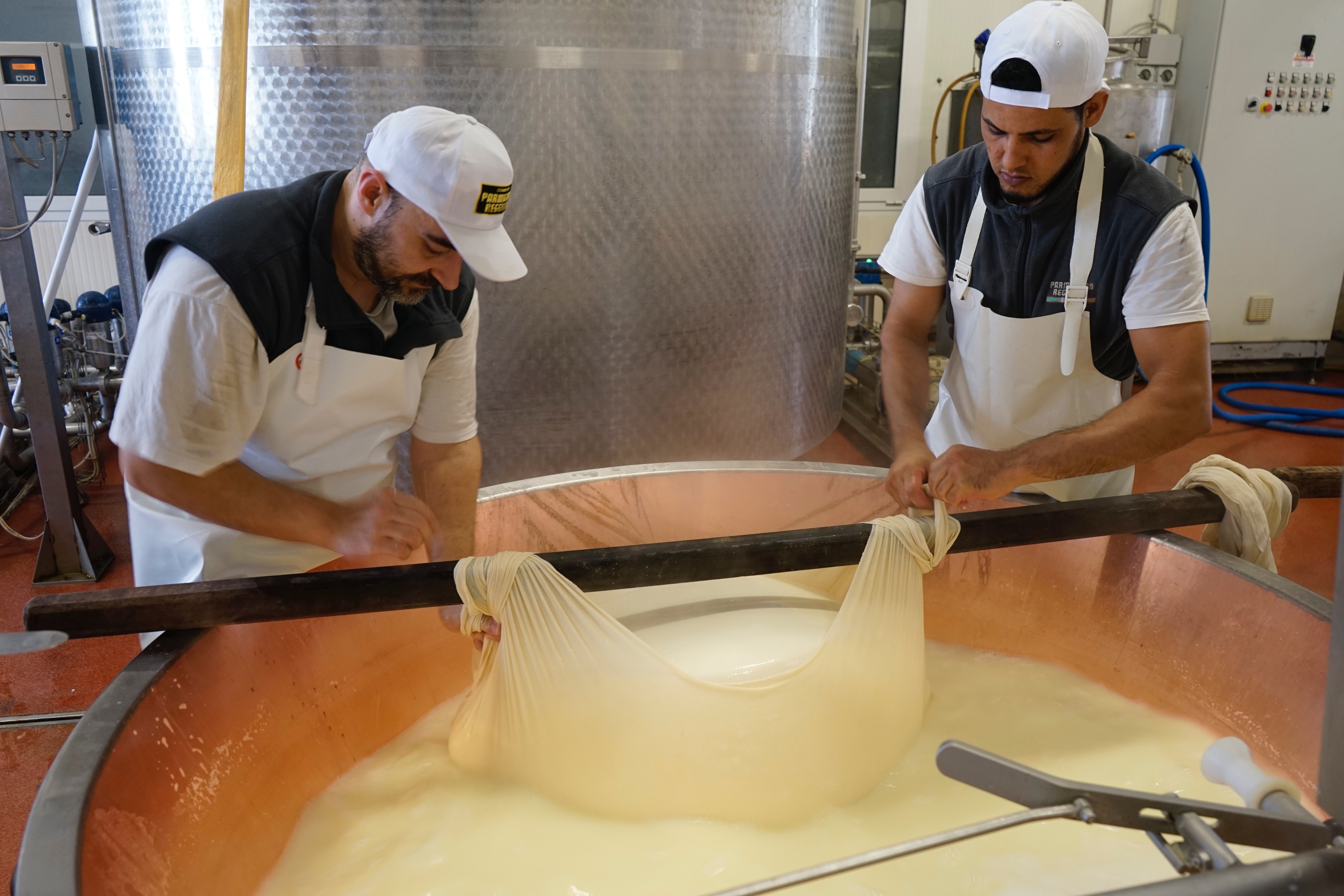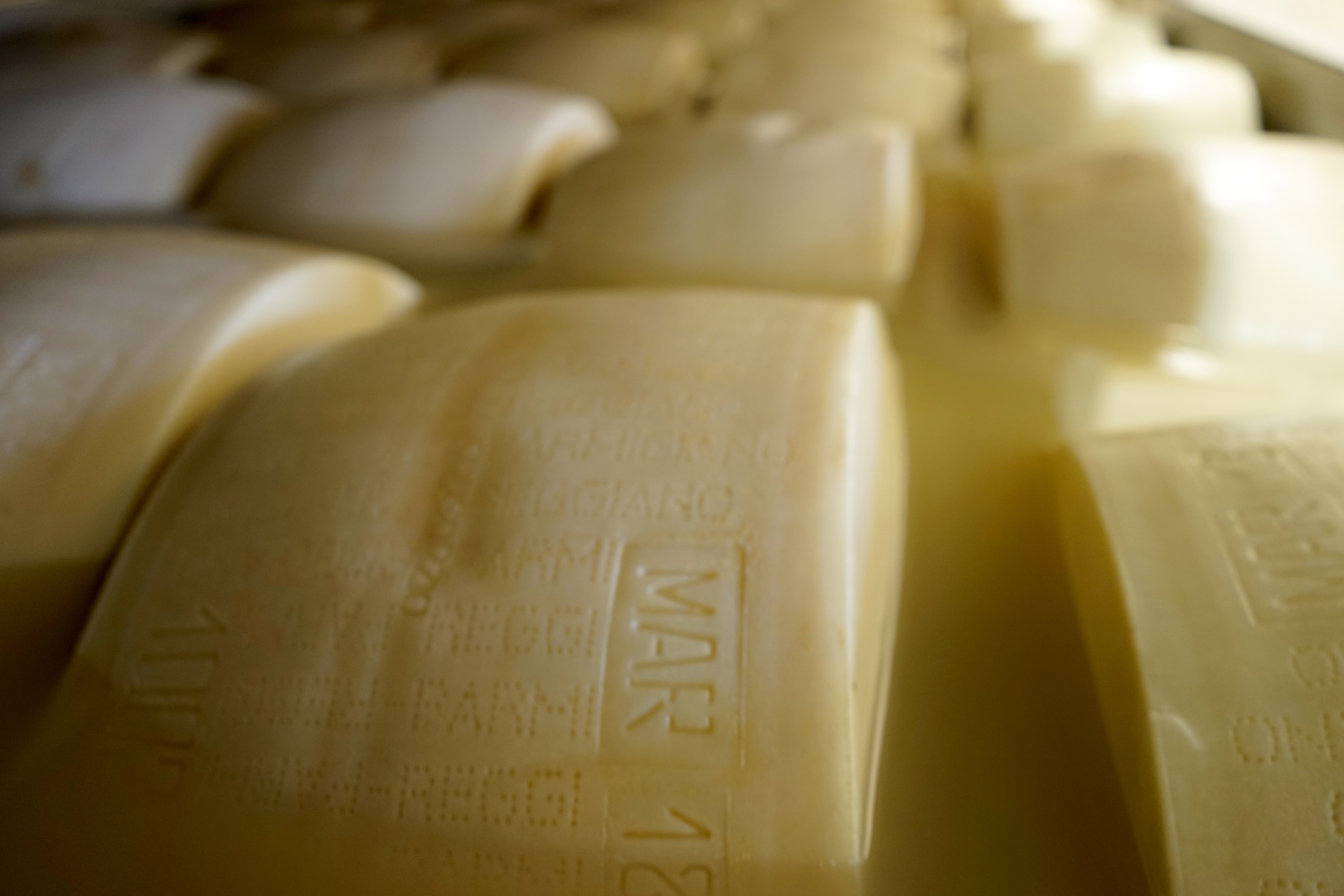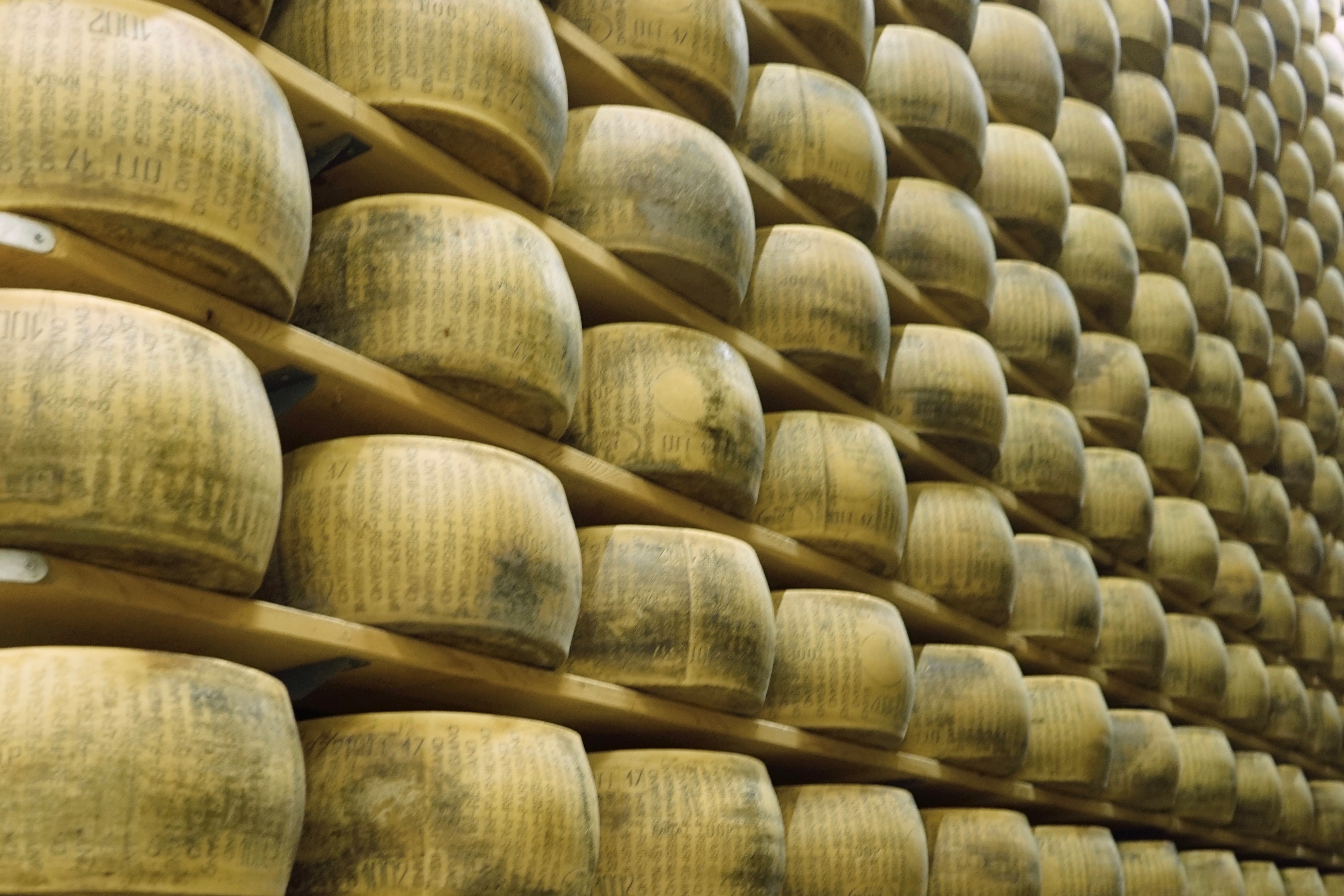This time we’ll take you behind the scenes, for a peek into how this incredible cheese is made. Every single morning in the Emilia Romagna area, 365 days a year, some 330 cheese makers endure in this 800-year old practice. Over the centuries things have changed and production has increased significantly but the essence of how Parmigiano is made has not changed. The milk is still local and raw, from cows feeding only on locally grown forage. Most of the steps in the production have remained manual and time is still crucial: no shortcuts are allowed, with a focus on quality only.

Cheese makers use the milk from the evening milking: by resting overnight it naturally separates and brings the fatter part to the top. Early in the morning this delicious cream top is skimmed and used to make fresh butter, while whole milk from the morning milking is added to the skimmed. The process is very rigorous and occurs in large, bell-shaped copper cauldrons. The addition of calf rennet and fermented whey (very rich in natural lactic ferments and obtained from the processing of the day before) is the following step.
 Once the milk coagulates, the curd is broken using a traditional tool called ‘spino’, which looks a bit like those old steel solar system models, but without the planets. The liquid solution is heated and the cheese granules sink to the bottom. After resting for around thirty minutes the cheese mass is removed by the cheese makers with very skilful, swift movements. Cut into two parts it is then wrapped in its typical cloth. The cheese is then placed in a mould which will give it its final, iconic shape.
Once the milk coagulates, the curd is broken using a traditional tool called ‘spino’, which looks a bit like those old steel solar system models, but without the planets. The liquid solution is heated and the cheese granules sink to the bottom. After resting for around thirty minutes the cheese mass is removed by the cheese makers with very skilful, swift movements. Cut into two parts it is then wrapped in its typical cloth. The cheese is then placed in a mould which will give it its final, iconic shape.
Once settled, the Parmigiano Reggiano wheels are immersed in a brine solution for about a month, and it’s in this period of time that the cheese is slowly salted via absorption.
 The ageing process begins at this point, and it’s a whole new journey.
The ageing process begins at this point, and it’s a whole new journey.  For at least 1 year the wheels rest on wooden shelves, they are turned and checked upon frequently, taken care of and nurtured with religious affection.
For at least 1 year the wheels rest on wooden shelves, they are turned and checked upon frequently, taken care of and nurtured with religious affection.  Only time allows the cheese to develop those exceptionally intense and complex flavours. Just like an aged wine or ham, this is where all the magic happens. Well, not all. Wait until you taste it!
Only time allows the cheese to develop those exceptionally intense and complex flavours. Just like an aged wine or ham, this is where all the magic happens. Well, not all. Wait until you taste it!